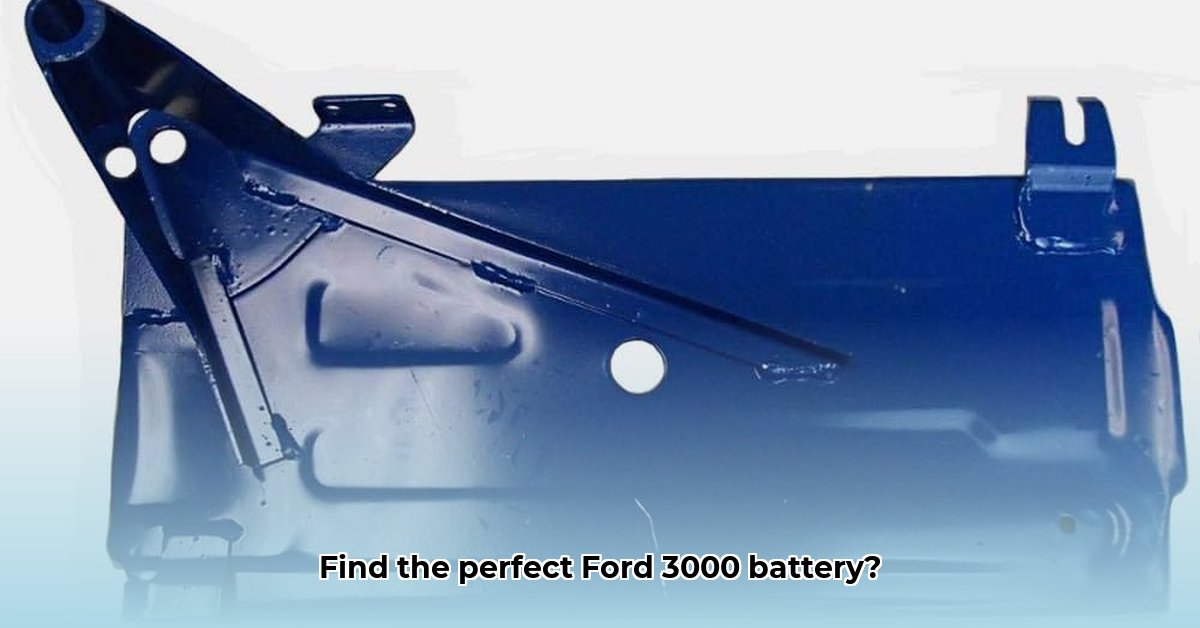
Choosing the right battery for your Ford 3000 tractor is crucial for reliable starts and dependable performance. This guide simplifies the process, helping you select the ideal battery based on your needs and climate. We'll compare two common options – the 4DLT and the Group 65 – and provide actionable steps to ensure your tractor stays ready for work. For more information on tractor batteries, check out this helpful resource: Tractor Batteries.
Decoding Battery Specifications: Understanding CCA, RC, and Group Size
Before we delve into specific battery types, let's clarify some key terms:
Cold Cranking Amps (CCA): This measures the battery's ability to deliver current at 0°F (-18°C) for 30 seconds. Higher CCA means better starting power in cold weather. Think of it as the battery's "muscle" for cold starts.
Reserve Capacity (RC): This indicates how long the battery can power accessories (like lights) at a 25-amp draw with the engine off. A higher RC provides more backup power. Consider it the battery's "stamina".
Group Size: This refers to the battery's physical dimensions (length, width, height). It's crucial to ensure the new battery fits your tractor's battery tray.
4DLT vs. Group 65: A Detailed Comparison
The Ford 3000 often uses a 4DLT battery, known for its high CCA and RC, ensuring reliable starts even in freezing temperatures. However, the Group 65, a smaller and often cheaper alternative, might suffice in warmer climates.
Here's a comparison:
| Battery Type | Pros | Cons | Ideal Climate |
|---|---|---|---|
| 4DLT | High CCA & RC, reliable cold-weather performance | Higher cost, may be less readily available | Cold and harsh winters |
| Group 65 | Lower cost, readily available | Lower CCA & RC, potentially insufficient in cold weather | Mild climates, shorter cranking times needed |
Rhetorical Question: Considering the significant price difference, is the superior performance of a 4DLT battery worth the extra cost in your specific climate?
Quantifiable Fact: A properly maintained battery can last three to five years, significantly extending your tractor's operational uptime.
Human Element: "Many farmers in colder regions swear by the 4DLT for its reliability," says John Miller, an agricultural equipment mechanic with 20 years of experience.
Choosing the Right Battery: A Step-by-Step Guide
Follow these steps to ensure you pick the best battery for your Ford 3000:
Assess Your Climate: Harsh winters require a high CCA battery (like the 4DLT). Milder climates offer more flexibility.
Evaluate Your Tractor's Condition: A well-maintained engine might tolerate a lower CCA battery. A poorly maintained engine will need higher CCA for reliable starting.
Research Battery Brands: Read reviews and compare warranties before buying. Look for reputable brands with proven reliability.
Verify Dimensions: Measure your battery tray to guarantee compatibility with the chosen battery size (4DLT or Group 65).
Consult Your Local Dealer: Experienced dealers can provide valuable insights and installation assistance. They're a great resource for tailored advice.
Battery Maintenance: Extending Lifespan
Regular maintenance significantly extends your battery's life:
Clean Terminals: Regularly clean battery terminals to eliminate corrosion and ensure a good electrical connection.
Check Fluid Levels (if applicable): Monitor and maintain electrolyte fluid levels (if your battery type requires it).
Consider a Block Heater: In extremely cold regions, a block heater can significantly assist starting and reduce battery stress.
Conclusion: Making the Informed Decision
Selecting the ideal battery for your Ford 3000 involves weighing factors like cost, climate, and tractor condition. While a 4DLT often provides superior performance in cold climates, a Group 65 might suffice in milder conditions. Prioritize regular maintenance to ensure reliable performance and maximize your battery's lifespan. Remember to consult your local tractor dealer for personalized advice.